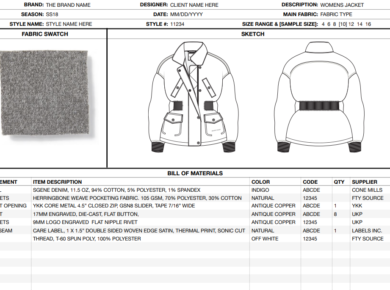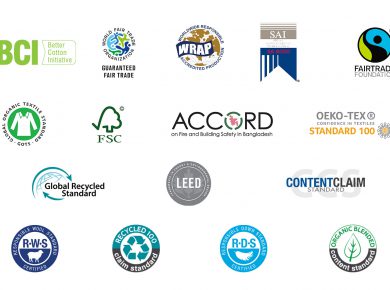We hope you found part one of “Negotiating with your supplier” informative, and it added some ammunition to your negotiation arsenal.
Let’s skip the long introduction, which was covered in part 1, and move right on to the final five negotiating issues and tactics.
Do not get stuck on issues
Another common problem with negotiation, is getting stuck on one particular issue. Negotiations always cover a multitude of issues, so do not get bogged down on one. Even experienced negotiators get tunnel vision, and fixate on an issue, when they would be better served by putting it aside for the moment.
If you cannot come to an agreement on a specific issue, put it to one side and move on, agreeing to come back to the issue at a later stage. Often you will find that by moving on to other issues, will actually solve the issue where there is a stalemate, by discovering potential solutions along the way.
You may also find that the issue that you are stuck on, is not really material at all in the big picture, and therefore not as important as previously thought. This is often a big problem when you get stuck / fixate on an issue. You give it more importance than is actually deserves.
Essentially, it’s fine to negotiate multiple issues at once. Negotiation is far from linear, and can jump all over the place. As long as you are organised, this is no problem. Always ensure you keep detailed notes of any negotiations. Never enter a negotiation without a notebook and a few pens!
If you do not have an answer, it’s okay

Often in negotiations, you will be faced with a question you are unable to answer. Even many seasoned negotiators panic at the prospect of this. They feel the inability to answer immediately is a sign of weakness or lack of knowledge. The problem is that any answer they give will not be correct, as they do not have all the facts, or even any of the facts. Any immediate answer is more of a face-saving gesture that can land them in really hot water, and can weaken, and at worst destroy the negotiation process.
Possibly the question is one they have not considered, or one they do not have the authority to answer. This is common in negotiations, as in many negotiations the actual negotiator is either not the final decision maker, or has a specific mandate on what he / she is allowed negotiate on.
In cases like this, it is perfectly acceptable, to tell your supplier you need time to consider the issue, and put it aside for the moment. You can then gather all the required information to make the correct decision, or discuss with the ultimate decision maker.
As an example, assume you have been discussing Free on Board prices (FOB), and suddenly your supplier wants to change this to Ex Works. There is no way you will have accurate information on hand to determine how this effects your deal. You will need to discuss with your freight forwarder. Only they will be able to work out how this affects price. Your boss might also instruct you not to go higher than a specific price. However, once in negotiations your supplier realises they have made a legitimate mistake in the costing, that exceeds this price. If you agree to the price, your boss will have an issue. If you refuse the price, you may lose the deal. The only real solution is to discuss in detail with your boss.
As mentioned, many negotiators, feel they need to have an immediate answer to every question or issue raised during a negotiation.
This is a total fallacy.
Do not feel pressurised.
Pressure in a negotiation does not work in your favour. If you give an answer that does not reflect your true position, because you feel you need to, you cannot take that answer back. Simply state that you need some time to consider the question, and you will come back to your supplier in 24 hours (or any other realistic time frame). This in no way makes you look like a weak negotiator. The opposite is true. It shows experience and confidence.
Often a supplier will throw out a “curveball” question, knowing that you will be pressurised to give an answer there and then, with the express purpose of pressurising you into a wrong answer. It is a common tactic.
Concessions
Before entering into a negotiation with your supplier, it is useful to make a physical list of issues you are prepared to make concessions on (delivery dates, inspection costs, etc). Rank this list from the least important concession to most important beforehand. Obviously, you would want to concede the least important issues first.
The thing is, with any concession made, your supplier will feel the need to reciprocate, whether they want to or not. Studies have shown this is an unconscious process. The human brain is wired to look for an equilibrium. However, never make a concession too easily or quickly. Fight every concession, even if it is a minor one. The more you resist, the more your supplier will think that they have acquired, what you feel, is a major concession (even if it is the least important one on your list).
Conceding on an issue effectively puts the ball in their court. You have done something for them, so they “owe you one”. Do not be afraid to tell them that “They owe you one”. Seriously. Make it clear you expect something in return. This is best done in a casual, non-threatening way, but should always be done.
The concession does not need to be big. It can be something small. Maybe your supplier asks for an extra week to complete the order. This should not have a major effect on your order (if it does, it is bad planning on your part).
Avoid time pressure
We briefly mentioned pressure in negotiations. In the vast majority of cases, this revolves around time. Time pressure can be a major cause of poor negotiation, as it may result in you;
- Agreeing to terms you would normally not agree to.
- Failing to consider alternative options.
- Not being able to fully think through all your options.
- Failing to create any value in your negotiations.
- Paying a price higher than indicated by the market.
Your supplier already knows this.
That is why creating time pressure is a common tactic used by suppliers. Consider this common scenario. You go on a business trip to negotiate the production of a product with a supplier. The supplier knows that business trips are expensive, and more than likely you would have told them how long you would be in town for.
This sets you up for the time pressure trap.

You will often find that your supplier will avoid coming to an agreement on certain terms, telling you that they need a few days to think the terms through. Possibly the person you are negotiating with, tells you the big boss is away, and only the big boss can make the decision needed. This is usually nonsense, as no doubt you told your supplier that you would be visiting to finalise the deal well in advance of your trip. The sole purpose of this, is for your supplier to set up a last-minute meeting with you on the day you are leaving.
During this meeting the supplier knows you are under tremendous pressure to finalise all outstanding issues, and that there is a large chance you will agree to their (often ludicrous) terms, just to close the deal. Sound familiar?
So how do you avoid this deliberate tactic? Here are some approaches.
If you are only in town for four days, tell your supplier you are in town for a week. And that you are going to use the “extra” three days to visit other potential suppliers. This immediately flips the time pressure onto the supplier. Now they are under pressure to conclude a deal in four days, as they are under the impression you can close with one of the other “suppliers” you are visiting.
(Slightly off topic, but on any business trip, plan to see as many potential suppliers as possible, regardless of how long you are in town for.)
Another tactic is to ensure that you finalise as many issues as possible prior to your trip. There is a tendency amongst business travellers to finalise a lot of outstanding issues during their trip. They simply think that this is what a business trip is for. This is incorrect, as you can see from the above scenario. Finalise as many issues as you can prior to your trip.
Obviously, it is easier to discuss and agree on critical issues face to face, but the potential downside is that you are trapped by time. It is often a good idea to prioritise issues, and leave the ones with the lowest priority for your trip. Finalise the most important ones prior to your trip.
Ensure that you take copies of all relevant emails and other correspondence with when you visit your supplier. These are useful when a supplier tries to change previously agreed upon issues, which is relatively common.
Previously we mentioned aggressive negotiation tactics.
Showing a supplier, a mail confirming a term, with their name on it, when they try to change this term is relatively aggressive. But, the “aggression” comes from your supplier trying to change a previously agreed upon term. Physical, irrefutable evidence of an agreement has the tendency to cut through any nonsense very quickly and save time.
As a real-world example, a colleague was on vacation, while his boss was overseas negotiating with a supplier. An issue came up during the negotiations, where the supplier denied a previously agreed upon issue, confirmed in an email. The boss did not have any physical evidence of this, resulting in a frantic phone call to my colleague, who had to cut his vacation short, drive two hours to his office, find the specific email, and forwarding to his boss. This was in the days before smartphones, but is a real-world example. The supplier claimed they “forgot” that this issue was finalised. You get the point.
Lastly, if you cannot finalise every issue on the trip, don’t. Go home and finalise by mail or phone. Although your inner voice will be telling you to finalise, so you can relax on the trip home, don’t listen.
It is far smarter to dodge the time pressure trap!
As mentioned, this is a deliberate tactic on the supplier’s part. If your supplier is serious, it definitely will not kill the deal. They have just as much to lose as you do.
Know when to walk away
knowing when to walk away is a negotiation tactic.
Sometimes a deal just cannot be reached. It happens.
The problem is that after investing a lot of time, money, and energy into a negotiation, it is extremely difficult to walk away.
But there will always be cases where no agreement can be reached, despite all your best efforts.
Before you walk away, you do need to consider the following;
- Are you walking away as a bluff? If so, this is not what we are talking about here. We are talking about ending the specific negotiation for good. Bluffing is a tactic all on its own.
- Try to walk away in a way where you leave the door open for possible future business. Try not to burn all your bridges. You do not need to leave in a huff. Simply tell the supplier that you are sorry that you could not come to a deal this time, and possibly you can on a future project.
- Ensure that you have back up suppliers. We spoke before about “having your next best offer available”. It is advisable, even if you are not planning to walk away, to ALWAYS have back up suppliers.
- Is there any way you can save the deal? Possibly discuss this with a party not part of the negotiations. A colleague perhaps. A fresh perspective from someone with no skin in the game, might spark something.
- Walking away is not a sign of failure on your part. Do not take it personally. Do not let your ego get in the way of a logical decision. Your ego might force you to continue to flog the dead horse of the negotiation you are in.
What is critical if you walk away, is to try to determine what went wrong. As long as you learn from this, you have gained something of value.
You have now reached the end of our 2 blogs on negotiation with your supplier. Hopefully you have gained some insight into the often-murky world of negotiation, and can apply some of the tactics we mentioned in your next negotiation.
See what works for you. Some might and some might not.
These tactics are not magic, but using them and sharpening them during your negotiations with suppliers, will definitely add ammo to your negotiation arsenal.
Happy sourcing.






